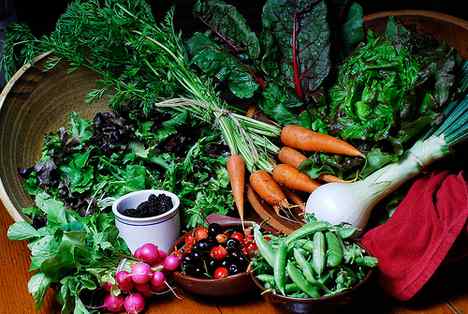
by Ashley Stonecipher | Mar 9, 2022
This is the third session in a 3-part series focused on growing and cooking food from your own garden.
About this event
Do you want to grow vegetables such as okra, peas and summer squash? Join us for a workshop focusing on how to best grow and care for your summer vegetable garden and learn some new recipes to make with your harvest!
Participants will have the chance to taste several foods and will take home a variety of seeds and starter plants.
For persons with disabilities requiring special accommodations, please contact the Extension Office (TDD, via Florida Relay Service, 1-800-955-8771) at least five working days prior to the class so that proper consideration may be given to the request.
The University of Florida (UF), Institute of Food and Agricultural Sciences (IFAS), UF/IFAS Extension is an Equal Opportunity Institution authorized to provide educational information without discrimination with respect to race, creed, color, religion, age, disability, sex, sexual orientation, marital status, national origin, political opinions or affiliations.
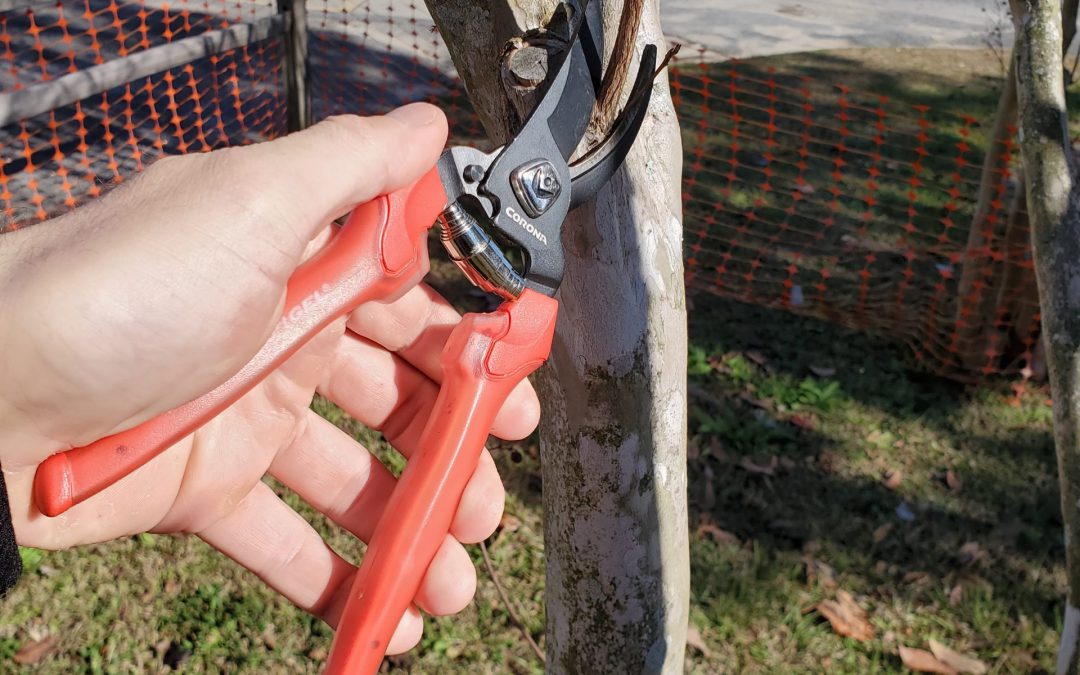
by Ashley Stonecipher | Jan 26, 2022
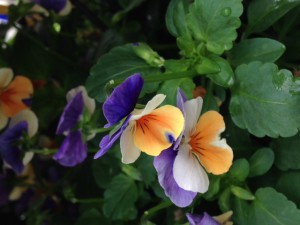
Violas. Photo Credit: University of Florida/IFAS Extension
It is freezing cold this week and hard to believe that we are already talking about “What to Plant” and “What to Do” to get started early. In North Florida there are cool-season annuals that can be planted now. The list includes pansies, violas, petunias, and snapdragons. As we are coming to the end of January it is time to plant crinum, agapanthus and gloriosa lily bulbs. Make sure to mulch these areas after planting to protect them from the cold temperatures. This is also the month to plant camellias, which these come in many colors and forms that your local nurseries will carry this time of year. If you haven’t planted all your cool season crops there is still time to do that now such as broccoli, kale, carrots, and lettuce. Irish potatoes can be planted now as well.
Now you might be asking “What can I do?”. January is a great time to prune non-spring flowering shrubs and trees to improve their form. This is a good time to plant deciduous fruit trees, this will give their roots time to develop before the warmer spring temperatures. Since existing trees are dormant, it is a good time to prune and fertilize them. When the temperatures are near freezing many of the tender plants will need to be covered to minimize damage. It’s a good time to plant a tree. Hurricane-resistant trees include live oaks, bald cypress, cabbage palms, and southern magnolias. It’s time to remove those dead spent seed pods on your crape myrtles and removing any crossing branches and twiggy growth will improve the appearance and the form of the plant.
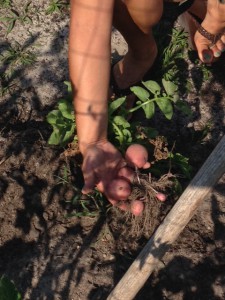
Potatoes planted in mid-February were ready to harvest in mid-May in Bay County. Photo: Vicki Evans, UF/IFAS Master Gardener of the plant.
As we go into February it will soon be time to apply a preemergence weed killer to your lawns to prevent warm-season weeds. Temperatures must rise to 65°F for 4 to 5 consecutive days before you do a preemergence application and make sure you are not using a weed and feed fertilizer. Citrus and other fruit trees can be fertilized at this time. The amount and frequency will depend on the age and type of fruit tree you are growing. Avoid pruning Citrus until spring to avoid any injury since cold temperatures are still possible. It is time to prune those roses this month to remove damaged canes and improve the overall form. After the pruning is complete you can fertilize and apply a fresh layer of mulch. They should begin blooming within 8 to 9 weeks after being pruned.
Dianthus, pansies, violas, and dusty millers are annuals that can take a chill and should be planted in February. You can continue to plant crinum and agapanthus this month and add on amaryllis and rain lily bulbs as well. If it has been dry make sure to provide plenty of water for the bulbs to establish and continue to protect them from the cold by adding mulch. Trees and shrubs will begin to bloom this month including red maples and star magnolias. Continue planting potatoes throughout the month and towards the end of February warm-season crops like tomatoes and pepper can be planted but be prepared to protect them from any late frosts.
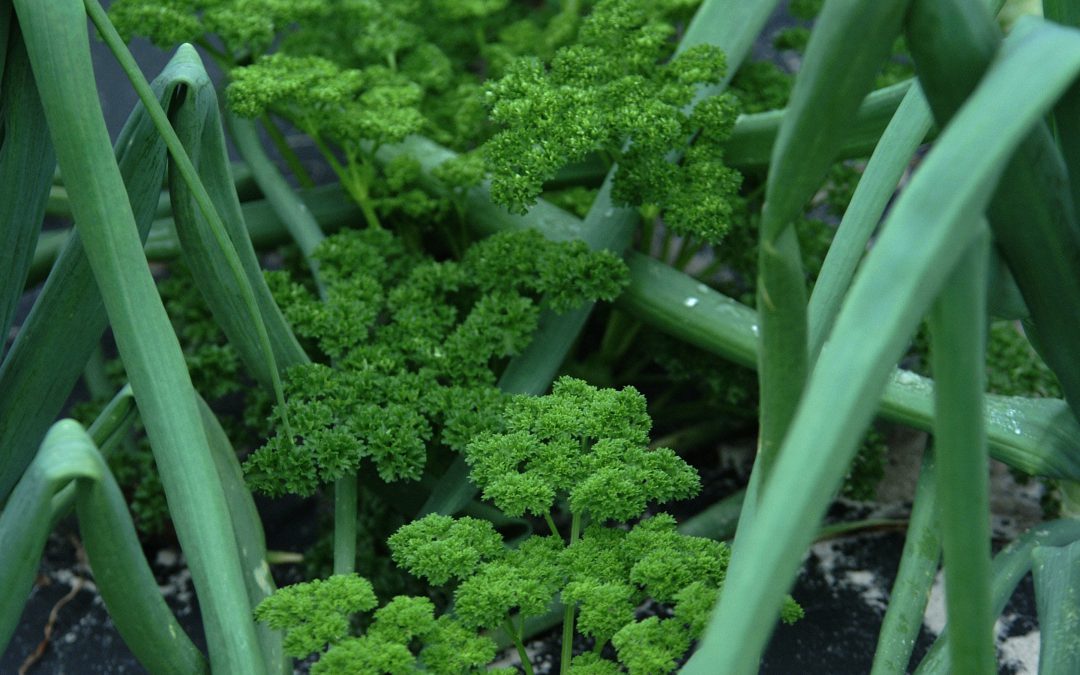
by Ashley Stonecipher | Dec 10, 2021
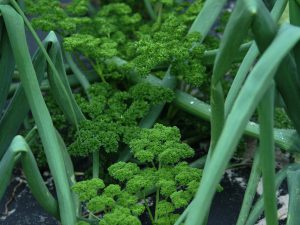
Multi-cropping at a Gainesville, FL organic garden.
As we go into the winter here in the Panhandle the following herbs will do well: cilantro, parsley, fennel, thyme, chives, oregano, sage and dill. Basil is a popular herb but will need to be inside by a kitchen window this time of year. It will drop leaves below 40 degrees F.
Cilantro: Needs full to partial sun, excellent soil drainage, and can be sued at 6 inches in height. The dry seeds are used to make the spice Coriander.
Parsley: Loves the cool weather and will bloom in the spring. Parsley likes afternoon shade. The seeds do take longer to germinate so do not give up on this plant. The root has a strong flavor and is used in holiday dishes. Parsley is beneficial to your health and contain vitamins A, C, K and is also high in calcium and iron.
Fennel: Needs full sun and moist soil. Fennel should not be planted near dill or cilantro because it will cross pollinate and reduce seed production. Fennel is good for digestive health and the shoots, leaves, and seeds are all useful in cooking. This plant also is host to the black swallowtail caterpillar.
Thyme: Needs full sun, well-drained soil and is extremely drought tolerant. Thyme does very well in a windowsill. This plant is highly attractive to bees and creates a delicious honey.
Chives: Prefers sunlight and well drained soil. This can be used for an onion or garlic flavor to your dish. It will need to be divided every couple of years since it grows so well here. Also, very good mixed into butter or cream cheese as a spread.
Oregano: This is the most widely used culinary and medicinal herb. It has tiny purple flowers that bloom all summer. It needs full sun and well-drained soil. Its best flavor is when you harvest the leaves as the flower buds form. The stems can be cut and dried and used in the cooking as well.
Sage: This herb needs full sun and very well drained soil. It is a small silvery leaf plant that is a very popular seasoning during Thanksgiving for turkey. It is also good on other poultry.
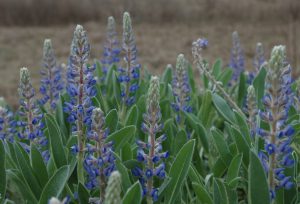
Sage. UF/IFAS Photo: Josh Wickham.
Dill: This herb likes full sun as well and serves as a host plant to the Black Swallowtail Butterfly. It is a very aromatic herb used both for its leaves and the seeds.
When harvesting herbs look for leaves that are young and tender with good color. Wash your herbs and pick them as you need them for best flavor, unless you plan to store them. When storing fresh herbs, it is important to know that they lose their flavor over time. They will store in the refrigerator from 1-3 weeks, freezer, and if dried can last up to 3 years.
Source: https://gardeningsolutions.ifas.ufl.edu/plants/edibles/ vegetables/herbs.html
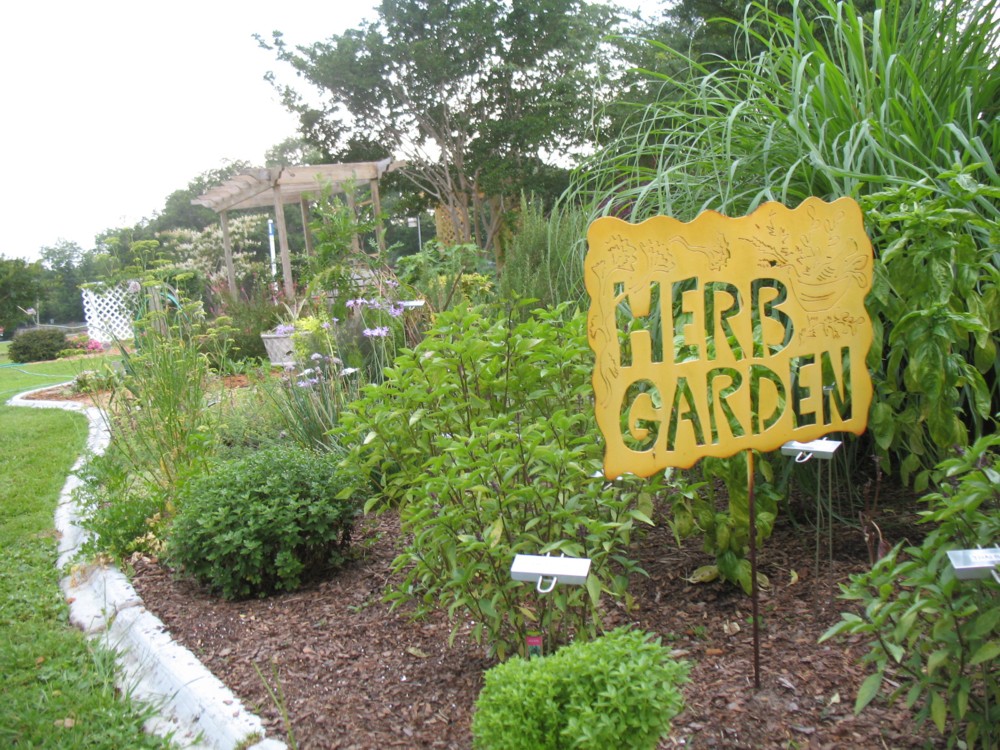
by Ashley Stonecipher | Dec 2, 2021
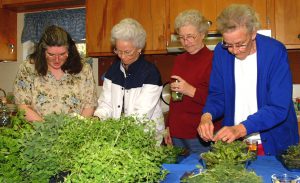
Women making vinegar at a class in Starke
Herbs are often underutilized in our cooking. There are many benefits of growing and using herbs. They add flavor to foods and beverages and reduce the need for salt, fat, and sugar. Herbs are also easy to grow at home and low maintenance!
Herbs can be used fresh, dried, and frozen. There are several tips of how to use herbs in your kitchen. You will need to adjust recipes depending on how the herb is prepared. For example, 1 tablespoon of finely cut fresh herbs equals 1 teaspoon of dried herbs and is equivalent to 1/4-1/2 teaspoon of ground dried herbs. It is always best to start with small amounts and add more to taste. Dried ground herbs can be used on meat, soups, sauces, and vegetables to name a few.
In hot dishes fresh herbs should be added near the end of the cooking time. If they are delicate herbs, you could do it in the last 1 to 2 minutes and less delicate herbs in the last 20 minutes of cooking. In cold dishes, herbs should be added several hours before serving or overnight. Each herb has its own flavor profile, so experiment and see which you like best! Some common herb and food combinations are basil and tomato products, rosemary and meats, sage and poultry, and mint and desserts. Have fun trying different combination of herbs and food and remember to start with little and add as needed for the desired taste!
Source: Minton, Emily and Maddox, Martha. 2018. “Cooking with Fresh Herbs.” UF/IFAS Extension. FCS8932/FY1209: Cooking with Fresh Herbs (ufl.edu)

by Ashley Stonecipher | Oct 28, 2021
As October gets by us and November quickly approaches, I would like to include the preparation on What to Plant? And What to Do? Some great annual plant choices are digitalis (foxglove), petunias, and Shasta daisy. There are many daffodil bulb varieties for North Florida including the following: Carlton, Fortune, Silver Charms, Thalia, and Sweetness. We will be getting into more of the cooler days, so this is a good time to start bulb onions and salad crops such as arugula, lettuce, and spinach. Dill, fennel, oregano, and sage are all herbs that can be planted throughout the fall months.
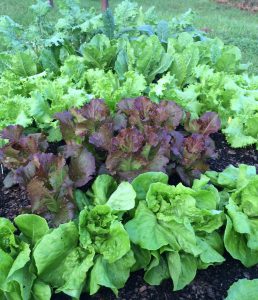
Start preparing now so your fall garden will be full of dark leafy greens, multi-colored lettuces, and root vegetables of all shapes and sizes. Photo by Molly Jameson.
In lawns there are a few key things that can be done in October. It is possible to control winter weeds before they appear. This is the time to use preemergent herbicides when nighttime temperatures are between 55-60 degrees Fahrenheit for four to five days in a row. If a green lawn is desired, you can overseed with annual ryegrass when the daytime temperatures are in the low 70s. Remember, the lawn will still need to be watered and mowed to maintain a healthy ryegrass. Watch for fungus like brown patch and large patch disease. This can become active when the soil temperature is between 65-75 degrees Fahrenheit.
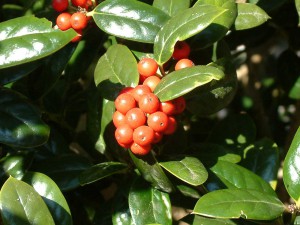
Hollies also attract bees to the landscape.
Credit: Beth Bolles, UF IFAS Extension Escambia County
And last but not least as you prepare for winter around the corner you can plant evergreen hollies that will make it through the cold and provide a splash of color with red berries. Gather pine needles that are dropping and use as a natural mulch, and this is the last month that strawberry plants can be established in a bed or a large container.












